
« PREVIOUS ENTRY
The “Milky Way Transit Authority” map
NEXT ENTRY »
@cavafy probably wouldn’t be on Twitter
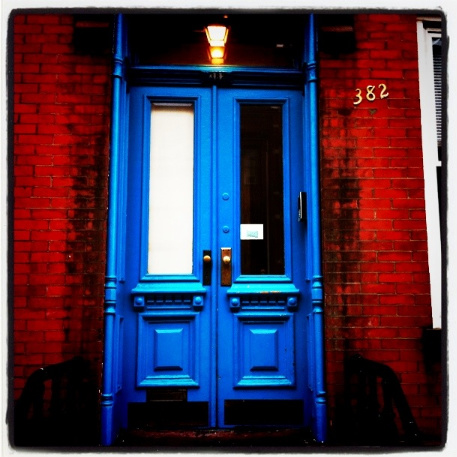
That door above? It’s from a brownstone about three blocks from my house. It’s on the way to the subway and the local grocery store, so I’ve probably walked past it 100 times since I moved back to Brooklyn earlier this year.
But I never particularly noticed it. Why would I? There are about four trillion brownstones where I live, with doors just like this one.
Then a week ago, things changed when my friend Nick Bilton showed me the hot new mobile app-du-jour, Instagram. If you haven’t tried Instagram, it’s a brilliantly simple concept: You snap pictures on your phone, apply one of a dozen filters that work various forms of retro-izing algorithmic hoodoo — remaking them Lomo style, for example — after which you upload the pictures to your stream. Then it’s off to the social-media races! You subscribe to other folks’ photo streams, comment or “like” other photos, check out the trending “popular” photos, etcetera etcetera.
I was instantly, and horribly, hooked. Sure, I have lots of apps on my phone, and I check some of them very, very often. But my Instagram behavior verges into the realm of what one could more properly call tweaking. Apparently I’m not alone; after only one month in business, Instagram has already amassed well over 500,000 users. But why? What’s the allure?
As many have noted, some of Instagram’s appeal is that it’s so perfectly simple, with none of crufty bells and whistles that plague, say, Facebook. Instagram is simpler even than Flickr: As Faruk Ates pointed out, you’re not trying to collect and curate photos. You just see something and — boom — in about 15 seconds you’ve shared it with everyone in your network. And while, sure, there are photos on Facebook and Twitter, it turns out there’s something weirdly hypnotic about following the lives of your friends through nothing but images. Given that Instagram’s user base is very international (for now, anyway), the most-popular page of photos is like a constellation of slices-‘o-life from around the globe. About half the people I’m following are total strangers in Russia, Korea and Argentina who take strikingly cool pictures.
But for me, the really deep appeal of Instagram is more subtle: It changes the way I look at the world around me.
I’m not a super visual person; I do not normally take a lot of photos. But now I am, and do. Whenever you join a new social network, there’s this sudden, gentle pressure to, y’know, be more interesting. In the case of Twitter, that manifests itself as a pressure to post ever-more-cool undiscovered URLage. In the case of Instagram, it means posting ever-more-nifty snapshots. And this in turn means that I’ve begun looking at the world around me anew. I used to walk around my neighborhood blissfully — or stressfully — ignoring my surroundings, while staring at the sidewalk (or, ironically, my iphone). Now I find myself spotting unusual bits of graffiti, or patterns that fall trees make against the sky, or how super strange the robot is on Yo Gabba Gabba when my kids watch in the morning. Or that blue door on the brownstone in the picture above: How did I not notice how pretty it was? It’s like my third eye has opened up!
What’s more, I think Instagram’s image-altering filters are a key part of my visual awakening, because they often take meh photographs and render them newly weird, making me look at the subjects in a new way. Plenty of folks have critiqued the fad towards lo-fi photography on the iPhone (like the Hipstamatic), arguing that it harnesses nostalgia to make boring pictures seem artificially cool.
I’m sure that’s true for some people. But filtering makes me look at stuff with fresh eyes. The unaltered picture of that brownstone door was attractive enough; but after the Lomo filter I realized it reminded me of a Tardis. I began scrutinizing otherwise blasé stuff in my house, wondering, hmm, how would that look with a filter applied? This reached its apotheosis — or nadir, depending on how you look at it — a few days ago while taking out the trash, when I found myself regarding the decrepit lids of my plastic garbage cans in whoa-dude daze. I whipped out Instagram and discovered that — hey — the lids’ texture looks vaguely lunar if you strip out enough color detail. (Snapshots below the jump! For those who cannot wait to see my garbage-can lids.)
And this, really, is what I love most about new communications tools. At their best, they encourage us to pay attention to our lives in new ways.

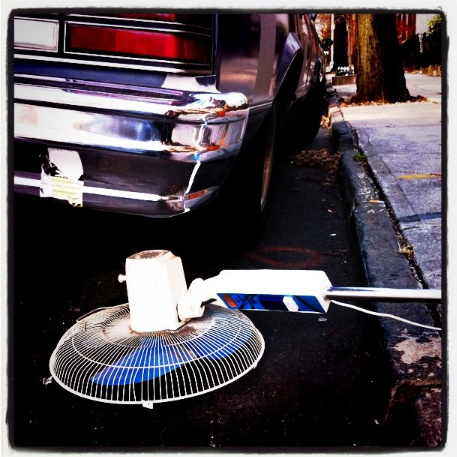

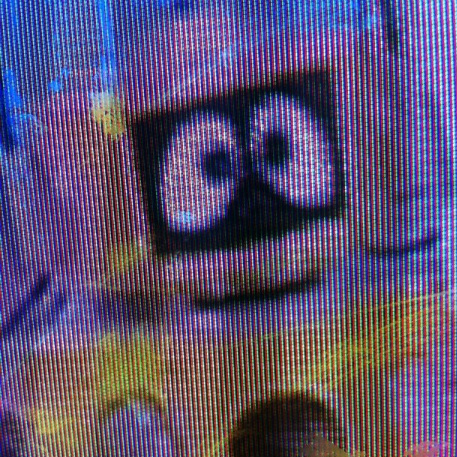
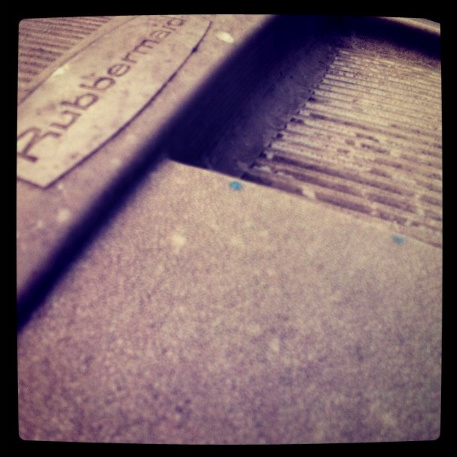
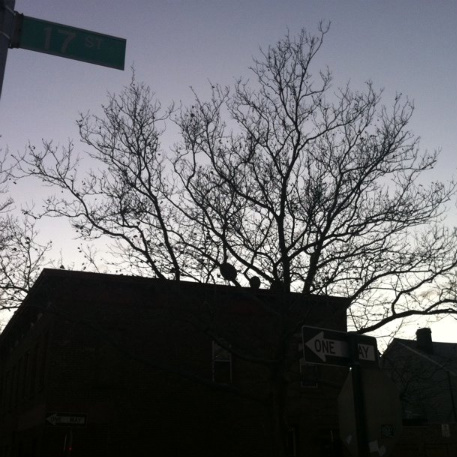
I'm Clive Thompson, the author of Smarter Than You Think: How Technology is Changing Our Minds for the Better (Penguin Press). You can order the book now at Amazon, Barnes and Noble, Powells, Indiebound, or through your local bookstore! I'm also a contributing writer for the New York Times Magazine and a columnist for Wired magazine. Email is here or ping me via the antiquated form of AOL IM (pomeranian99).

ECHO
Erik Weissengruber
Vespaboy
Terri Senft
Tom Igoe
El Rey Del Art
Morgan Noel
Maura Johnston
Cori Eckert
Heather Gold
Andrew Hearst
Chris Allbritton
Bret Dawson
Michele Tepper
Sharyn November
Gail Jaitin
Barnaby Marshall
Frankly, I'd Rather Not
The Shifted Librarian
Ryan Bigge
Nick Denton
Howard Sherman's Nuggets
Serial Deviant
Ellen McDermott
Jeff Liu
Marc Kelsey
Chris Shieh
Iron Monkey
Diversions
Rob Toole
Donut Rock City
Ross Judson
Idle Words
J-Walk Blog
The Antic Muse
Tribblescape
Little Things
Jeff Heer
Abstract Dynamics
Snark Market
Plastic Bag
Sensory Impact
Incoming Signals
MemeFirst
MemoryCard
Majikthise
Ludonauts
Boing Boing
Slashdot
Atrios
Smart Mobs
Plastic
Ludology.org
The Feature
Gizmodo
game girl
Mindjack
Techdirt Wireless News
Corante Gaming blog
Corante Social Software blog
ECHO
SciTech Daily
Arts and Letters Daily
Textually.org
BlogPulse
Robots.net
Alan Reiter's Wireless Data Weblog
Brad DeLong
Viral Marketing Blog
Gameblogs
Slashdot Games